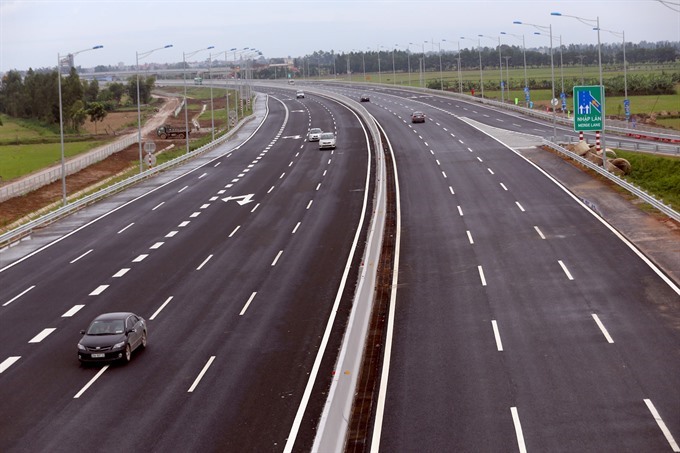 Society
Society

A number of highways have been opened for public use recently, benefiting the country’s socio-economic development. But ensuring traffic safety along these roads is difficult due to drivers’ low level of awareness and slack infrastructure management, transport experts say.
 |
| A section of the Hà Nội - Hải Phòng Expressway. - VNA/VNS Photo Huy Hùng |
HÀ NỘI – A number of highways have been opened for public use recently, benefiting the country’s socio-economic development. But ensuring traffic safety along these roads is difficult due to drivers’ low level of awareness and slack infrastructure management, transport experts say.
Việt Nam has 13 highway routes with a total length of 745km. Traffic accidents on highways made up about 13 per cent of total road accidents, but were much more serious than most others.
The latest serious accident occurred on the Hà Nội-Hải Phòng Highway last Saturday when a tanker transporting oil crashed into a semi-lorry, killing two people. The semi-lorry had stopped on the shoulder to change a tyre, but it encroached a little into the driving lane, according to the highway managers.
Trần Anh Tú, director of the Hà Nội-Hải Phòng Highway Management Board, said that the board had banned highway stops except for unavoidable technical reasons, but many drivers stop on the side lane to rest instead of at the designated rest stations.
In addition, about 50 per cent of car breakdowns were repaired on the highways by their owners, incurring serious risk of accidents, he said.
According to the highway code, drivers must call a repair service if their cars break down, said Tú. If they cannot call one and they try to solve the problem by themselves, they must use warning signals.
As many as 80 per cent of traffic accidents on highways were caused by drivers lack of concentration and loss of control through speeding, according to the Transport and Development Strategy Institute
Lê Văn Đạt, an expert from the Transport and Development Strategy Institute, said traffic accidents stem not only from drivers’ low awareness of safety issues, but also because services along the highways do not meet real demand.
Only 10 stopping stations were set up along 13 highway routes for drivers to relax, fuel up and fix breakdowns. The Hà Nội-Hải Phòng road does not have a single stop station.
Several investors applied intelligent transportation systems (ITS) in managing highways on five routes, but the application only checks transport conditions and protects the investors’ infrastructure, said Đạt.
Other transport experts are concerned about health problems.
In 2013, then Prime Minister Nguyễn Tấn Dũng approved a project on traffic accident emergency assistance along highways by 2020, under the responsibility of the Ministry of Health. But the project has not been implemented. In addition, many medical stations are too far from accident scenes, resulting in delayed aid. — VNS









